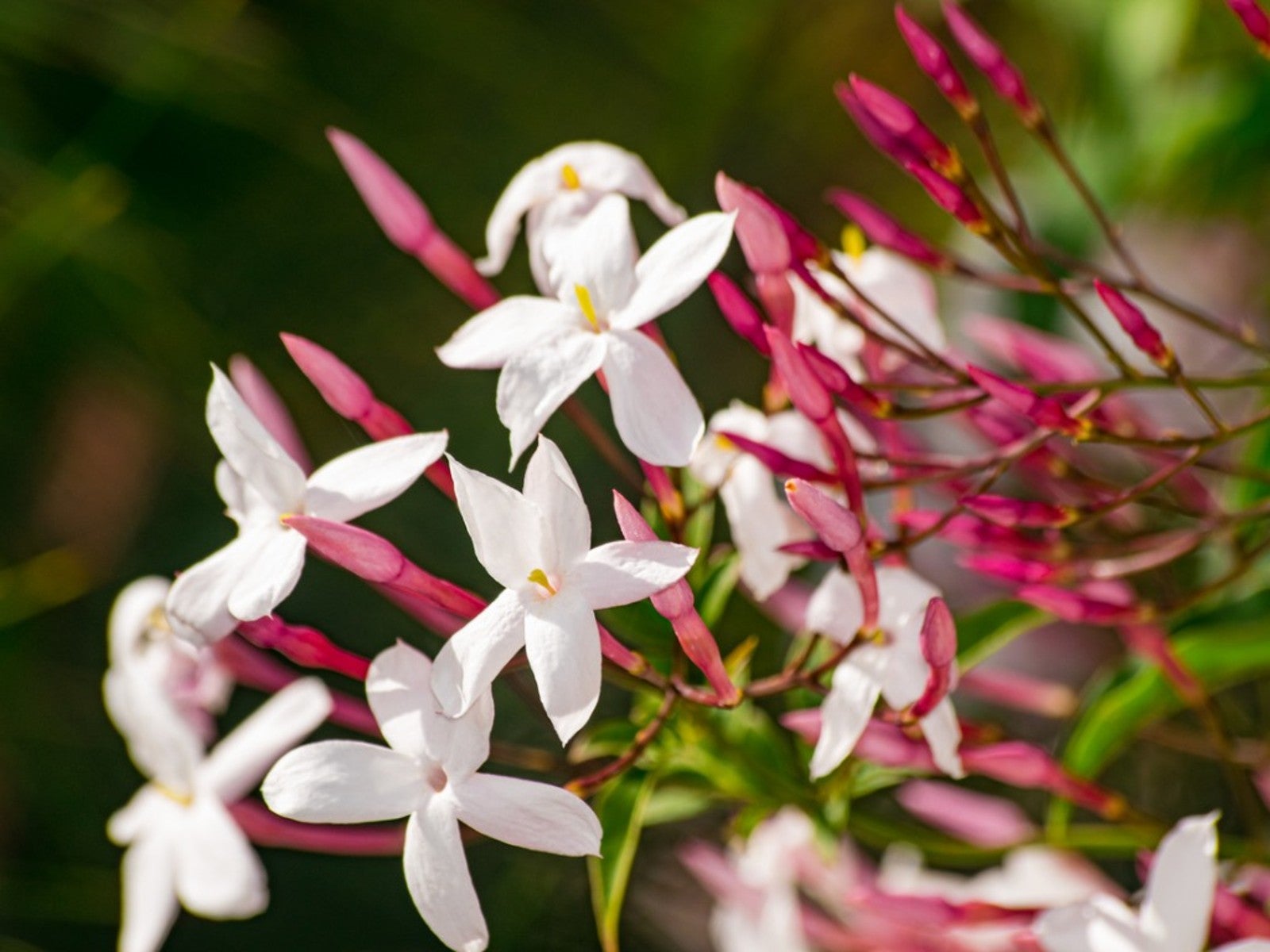Growing Jasmine Plant: Information For Growing And Care Of A Jasmine Vine


Tonya Barnett
Quick Jasmine Facts:
- Botanical name – Jasminum spp.
- Height – 20-30 ft (6-9 m)
- Spread – 5-10 ft. (1.5-3 m)
- Sun exposure – Full Sun, Part Sun
- Soil requirements – Neutral, Slightly Acidic
- Hardiness zones – USDA Zones 7-10
- When to plant – Spring, Fall
The jasmine plant is a source of exotic fragrance in warmer climates. It’s an important scent in perfumes, and also has herbal properties. Jasmine can be vines or bushes, and some are evergreen.
Most jasmine plants are found in tropical to sub-tropical climates, although a few may thrive in temperate zones. Not all jasmine is fragrant, but the most common and hardy varieties produce a sweet, wafting fragrance.
Protection from cold temperatures is one of the most important aspects of jasmine plant care. In this article, we will explore in greater detail the needs and care requirements of common jasmine.
Planting Jasmine
Choose a warm, sheltered location when growing jasmine. The vining varieties require a strong support structure as some can grow to 15 feet (4.5 m) tall. A trellis, lattice, pergola or wall allow the vine to climb and grow into its full beauty. Jasmine vines need to be trained early when they are young. You may use plant ties or just weave them through trellis sections. Jasmine plant care is not difficult but does require vigilance.
Install the plant in the ground at the same level it was growing in the nursery pot. Most jasmine plants are grafted onto the common jasmine rootstock because of their superior hardiness.
Soil & Fertilizer Needs
All jasmine plants prefer sunny to lightly shaded sites with well-draining and moderately fertile soil. There are varied opinions on the ideal pH level for jasmine (from 5.5 to 7 pH), but it’s safe to say it performs best in soils that are slightly acidic. Before planting, a soil test can help you get a greater understanding of pH levels, and determine whether or not your growing beds will need to be amended. Adding a high-quality compost will help new plants get quickly established.
To promote blooming, apply fertilizer in early spring just before new growth appears. Well balanced granular feeds are most popular because they provide a slow release of nutrients throughout the season.
Sign up for the Gardening Know How newsletter today and receive a free copy of our e-book "How to Grow Delicious Tomatoes".
Water & Light Requirements
Jasmine requires at least one thorough weekly watering throughout the hottest parts of the summer. When in pots or containers, water them more frequently. Though the plants appreciate consistently moist conditions, take care to avoid overwatering. Most species of jasmine thrive where they are able to receive full sun throughout the day, but mid-day shade might be needed in some growing zones, specifically, those which experience both high heat and humidity.
Pruning Jasmine
In a jasmine vine’s second year it’s a good idea to pinch off the stem tips to promote branching and fullness.
Pruning jasmine is an essential aspect of plant care. Prune your plants to the size and shape you want. Trimming them back helps the plant produce more jasmine flowers, as well as prepare for next year’s growing season.
Try to deadhead and/or prune flowering jasmine immediately after it has stopped flowering. This will guarantee the formation of new flower buds, and prevent you from accidentally removing them the following spring. Jasmine plants that you plan to overwinter indoors should also be aggressively pruned at this time.
Propagating Jasmine
If you’re growing jasmine in your garden, you may want to multiply the plants. The best time to begin jasmine propagation is in late spring or summer, when the plant has finished blooming.
Cut small stem cuttings from new growth and remove excess leaves. Insert the cut ends into trays filled with a moist growing medium. Although not necessary, you may want to dip the ends in a root hormone to speed up your new plants. Water the new cuttings well and make sure they stay consistently moist. The cuttings should take root in about 4-6 weeks.
Problems, Pest, & Diseases
Outdoor jasmine plants seldom have trouble with insects or disease. It’s still a good idea to monitor your plants frequently for signs of stress or changes in conditions. Jasmine plants overwintered indoors as houseplants may be much more susceptible to several different types of foliar disease, as well as added pressure from insects. Blight and leaf spot are especially common and can lead to loss of your plants. Pests like spider mites and aphids can be treated with horticultural oil or neem oil.
Types of Jasmine
There are hundreds of species of flowering jasmine within the Jasminum genus. Though the group of plants is quite diverse, many common garden species are similar in their appearance and requirements for growth. A few popular species are:
- Common jasmine (Jasminum officinale) is a vine, and has larger glossy green leaves than Royal jasmine (Jasminum grandiflorum). Both can survive in temperate climates if they’re planted in a sheltered area.
- Arabian jasmine (Jasminum sambac) is a smaller bush with evergreen leaves.
- Winter jasmine (Jasminum nudiflorum) can survive colder temperatures than other varieties, but is not fragrant.
- The bush types are excellent landscape specimens with starry pink, white, ivory or even yellow scented blooms

Bonnie Grant is a professional landscaper with a Certification in Urban Gardening. She has been gardening and writing for 15 years. A former professional chef, she has a passion for edible landscaping.
- Tonya BarnettWriter